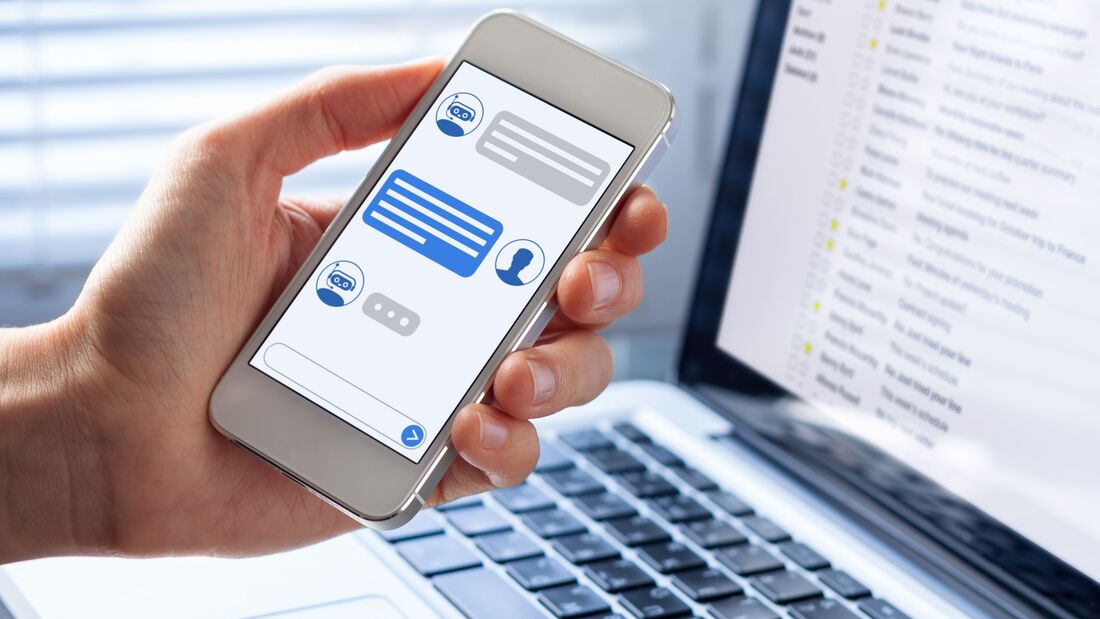|
Coronavirus is everyones biggest concern, but it does not mean we will not develop other health problems, such as gastro, appendicitis or injuries. We still need to see the doctor, but at the same time we do not want to expose ourselves to coronavirus, by going out. As a result, doctors have been encouraged to use Telehealth, (Telehealth is where you see a doctor via something like Skype or Facetime). Now you can see your GP by Telehealth under Medicare. As a family physician, I have been using Telehealth for many years. It will never take over from seeing a doctor face to face, but we can achieve a lot using a video consultation. As a doctor I need to gather a lot of information to work out what is wrong with you. If you can give me that information, I can perform a safer consultation via a video. If you have the right tools in your house, you can give me the information that I need and reduce the chance of missing something nasty. These tools have been around for many years and are not high tech. This week, we have created a special edition newsletter to highlight what tools can be used to help your doctor make a safe diagnosis. As mentioned before in this blog, these gadgets should be part of everyones first aid kit, to allow you to always see a doctor from the comfort of your own home, safe from the coronavirus. Online Health ServicesWhether you have the right equipment or not, there are many health services that you can access online. You can see a GP, get a blood test or even an STI check. Click on the button below for more information. For Clinic OwnersIf you are a clinic owner who is setting up a Telehealth service, please click on the link below and cut and paste the URL into an email or sms to be sent to your patients.
You can improve the quality of your Telehealth assessments by informing your patient population how to provide data that can help you make a diagnosis. Please note that your patients will need to be consented to receive communication via this process - Spam Act 2003)
1 Comment
You need transportation now? Uber.
You want to watch the latest movie now? Netflix. You want to see a healthcare practitioner now? Ehm…. In a world where nearly every type of service is available at the tap of an app, it’s surprising there are hardly any apps available to properly manage your own health. Surely, there are fitness apps to follow work outs or apps to book an appointment with a GP or healthcare practitioner. But what if you live remotely and require expert advice from a physiotherapist or exercise physiologist? Or you are jet setting around Europe and need to follow up with your healthcare provider about your rehab exercise program? When we launched Physitrack a few years ago, our aim was to give practitioners and their clients a seamless way of staying in touch and offer complete transparency about the clients’ progress with their home exercise programs. Key in achieving this was the free PhysiApp client apps we developed for iOS, Android and web. Being part of Apple’s Mobility Partner Program enabled us to design a super intuitive user interface that helps clients stay on track with their home exercises a lot better. The proof is in the pudding, with a 2-year study run by the University of Melbourne recently confirming that Physitrack helps to improve client adherence to, and confidence in, their exercise programs when completed via the PhysiApp app. Feedback we receive from clients around the world matches the outcomes of the clinical study, with patients loving the fact they not only have their exercise program and educational content in their pocket, but also can engage with their healthcare provider and provide feedback on their progress. It is no surprise that our built-in Telehealth feature is fast gaining popularity as a way for consumers to ’see’ their trusted healthcare provider. Powered by Dolby Laboratories, clients can have secure video calls with their clinician from inside the PhysiApp client app, enjoying Dolby quality sound and Ultra HD video. A feature clients love especially is the live-streaming of exercise videos, whereby the practitioner can stream any of the Physitrack exercise videos directly to the client’s phone during the Telehealth call. It’s a great way for clients to get a real grasp of the correct technique and be confident they know how to perform the prescribed exercises by themselves. So whether you live in a remote area or enjoy cruising the Greek islands, staying in touch with your clinician is now easier than ever before. Just remember to complete your exercises in PhysiApp before you order your next burger through Uber Eats! Blog post written by Marijn Kortekaas. Marijn is a Partner at Physitrack Ltd. For more information on Physitrack, click here. Disclaimer: This text does not serve as medical advice or an endorsement of a particular product but serves as an example of how technology can improve healthcare. If you have any questions, seek advice from your doctor. Technology is affecting all aspects of healthcare. It is changing how we learn about health, how we monitor our health and also how we treat ourselves. Access to services within healthcare can be hard, especially in the UK. To see a Physio can take many months over here and that is just for the first appointment. Your next appointment can be many weeks later. So when you see your Physio for the first time, they may diagnose you, give you some treatment to help you with the pain and then give you some exercises to help rehabilitate you. But the problem is that you may not be seen or supervised for many months. As a patient you begin to ask yourself whether you are doing your exercises correctly. Who knows? Nobody is monitoring your progress. If only you could access your Physio remotely so that they can let you know whether you are doing things correctly or intervene if there is a problem. Well now you can. Let me explain. About 2 years ago, I went to the gym and did a tough upper body workout. It was a sunny, spring Saturday morning and when I was walking home I noticed that the weeds were growing in the garden. I decided to spend the next 3 hours weeding. I noticed a little niggle in my shoulder but as most men do, I just ignored it and carried on. Over the next week or so the niggle persisted but I carried on life as normal, working, exercising and picking up my 2 year old who never wanted to walk anywhere! Over the course of the next year, this niggle continued. Whenever it started to improve, my 2 year old would develop an aversion to walking and picking him up would aggravate my shoulder. After about 18 months my shoulder started to really hurt. When my wife stated that I reminded her of my young child in that I couldn't get myself dressed, (due to pain rather than laziness!), I felt something needed to be done. Off I went for an ultrasound scan and was diagnosed with Supraspinatus tendinopathy. I then started to get that sinking feeling that anyone with a tendon injury gets ...I've got months of rehab in front of me. I rang Barry Nguyen, (it's very useful when your business partner is also a Physio!) and asked what I needed to do? Don’t stress, was his advice. It will get better but it could take 3-6months. 3-6 months of Physio?!! How much will that cost??!! And I am going to the UK soon, where you can never get an appointment to see a Physio!!! It was then that he introduced me to Physitrack. Physitrack is a way that Physiotherapists can provide you with the exercises that you need to do, monitor your progress remotely and then change your rehab program as needed. So what did I get? I first received an email that showed a series of exercises that needed to be done. The exercises were explained with a clear, short video. I followed the videos. They were painful at first but then they became easy. I sent a message to Barry to let him know of my progress and then I received an email with more exercises to do that were more challenging and so on. The crazy thing was, for a period of time, I was in the UK and Barry was in Australia! After 3 months of intense rehab, I was doing push ups. 4 months, chin ups and 5 months bench press. Don’t get me wrong. I still needed the odd face to face review but most of the rehabilitation was done remotely.
A common complaint that I get as a doctor is that patients are unable to see their Physio often enough. Now with services like Physitrack, you are in communication (electronically) with your Physio who can supervise your recovery remotely, with the safety net of seeing you face to face, if there is a problem. Technology has infiltrated all industries and is slowly being accepted in healthcare. When it can be really hard to access healthcare in first world countries, we as health professionals and patients need to embrace technology to improve the service that we give and receive. Healthcare will never be completely remote but seeing or dealing with a health professional online will become part of the process, along with face to face consultations, when you have a health problem. I had to go to the UK as an emergency and without access to Physitrack my rehabilitation would have been delayed. Instead now my shoulder is better and I much to my wife’s relief, I have finally regained the ability to dress myself again! Blog post written by Dr Khurram Akhter. Khurram is an experienced primary care physician and a thought leader in the field of digital health. Disclaimer: This text does not serve as medical advice or an endorsement of a particular product but serves as an example of how technology can improve healthcare. If you have any questions, seek advice from your doctor. Background on low back pain
Low back pain is a very common health condition worldwide and a major cause of disability in all age groups. It can impact the level of functioning at work and life in general. The economic impact of lower back pain in the United State of America has been estimated to be over 100 billion dollars annually and growing. Lower back pain can be classified as acute (less than 6 weeks), sub-acute (6 to 12 weeks) or chronic (> 12 weeks). Low back pain symptoms Low back pain is generally not considered a ‘disease’ but a group of symptoms which may include:
Causes of low back pain In most cases, the cause of low back pain is unknown or difficult to pinpoint but multiple risk factors have been identified contributing to the development of lower back pain which include:
Popular medical management of low back pain Radiological imaging such as x-rays, CT scans and MRIs of the lumbar spine are often unreliable and unhelpful in determining the cause of your lower back pain. Popular medical treatments include pain killers (analgesics) and anti-inflammatories despite a lack of scientific evidence associated with its efficacy carrying potential side effects, as the causes of lower back pain are rarely addressed. Preferred evidence based treatment options include physical therapy (physiotherapy), joint mobilisation and manipulation, exercise rehabilitation, cognitive behavioural therapy and pain re-education. Surgical intervention is generally the least preferred option, and considered when conservative non-invasive management fails. When to seek medical attention? It is important to note that back pain can be a signal to a very serious medical condition so please seek immediate medical attention if you experience symptoms including:
Some tips to prevent low back pain or recurrence
Innovative tools which can help your back pain There are many tools available in the market that can help monitor and manage your lower back pain. There is an increasing number of innovative solutions in the market which promote drug free pain relief of your lower back pain including PainPod and Quell. There are also wearable devices which help improve your posture and core muscles at work and at home, notably, UprightGo. There are many exercise rehabilitation apps which assist in providing exercise programs to prevent and rehabilitate lower back pain conditions for example, Kaia’s back pain app, which in a recent study, demonstrated that it was more effective than traditional therapy and online education. Using wearables or activity trackers such as Fitbit, Garmin, Apple’s step counter, Strava or RunKeeper apps can help with behavioural change and promote good exercise habits. Disclaimer: This text does not serve as medical advice and if you have any questions, seek advice from your doctor. Blog post written by Barry Nguyen, an experienced sports and musculoskeletal physiotherapist and digital health expert. Chatbots are becoming commonplace in society, and are often used for virtual assistance, marketing, customer support and technical troubleshooting. This technology is emerging in healthcare with many startups in this field which include patient symptom checking and triaging, pre-consultation history taking and even assisting patients with common mental health conditions. The most popular chatbots currently in the market include virtual assistants such as Google Home and Amazon Alexa, and via messaging apps such as Facebook messenger, Whatsapp, WeChat and independent website landing pages.
So what exactly is a chatbot? A chatbot is software or a combination of software and hardware, enabled by varying levels of artificial intelligence which can conduct a conversation with a human user via auditory or textual approaches. They are designed to simulate as close as possible to human conversational behaviours. Potential Benefits
Risks and Limitations
Application in Physiotherapy There is an increasing number of use cases for physiotherapy and chatbots. As the chatbot technologies improve, this will continue to increase. There are a number of emerging chatbot solutions that the physiotherapy industry are incorporating for:
The Future As chatbot technologies become more mature and sophisticated, we will likely see more solutions in the market that can provide new value to physiotherapists and their patients. This will most likely begin with a surge of solutions, assisting physiotherapists with administrative burdens through intelligent automation. Artificial intelligence and machine learning powered solutions also have the potential to support physiotherapists with practitioner-patient communications, data collection, clinical decision making, symptom checking, health coaching, and patient triaging. The future is bright as such solutions will enable physiotherapists to focus on more complex work and patient care. Recently, Amazon in the US announced that its virtual voice assistant Alexa will be HIPAA compliant and conducting pilots in the healthcare space. Via voice recognition, this will enable consumers to do tasks such as making appointments with their doctors, and even access post-discharge instructions from their hospital. Yes, chatbots are likely to kill menial jobs in the longer term but will likely produce new ones that allow humans to be more productive, creative and ultimately, add more value to the world. Disclaimer: This text does not serve as medical advice and if you have any questions, seek advice from your doctor. Blog post written by Barry Nguyen, an experienced sports and musculoskeletal physiotherapist and digital health expert. |
AuthorContributors Archives
March 2020
Categories
All
|
|
SOCIAL
|
HealthAide is an independent resource. We do not own shares or make profits from the products listed on this site. Products and services have been curated using the Four Principles of Healthcare Ethics (Beauchamp, T. and Childress, J. (1985) Principles of Biomedical Ethics)
© COPYRIGHT 2018. ALL RIGHTS RESERVED.








 RSS Feed
RSS Feed